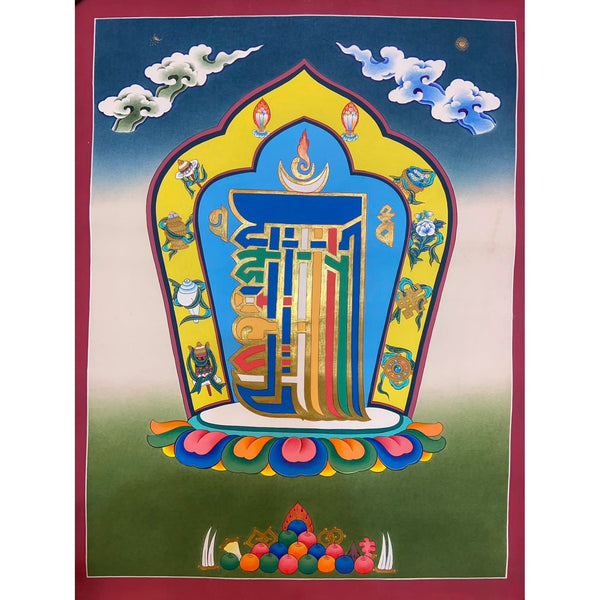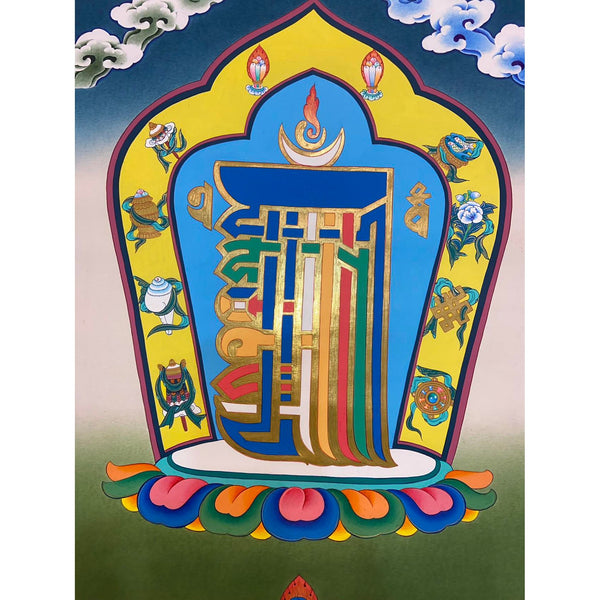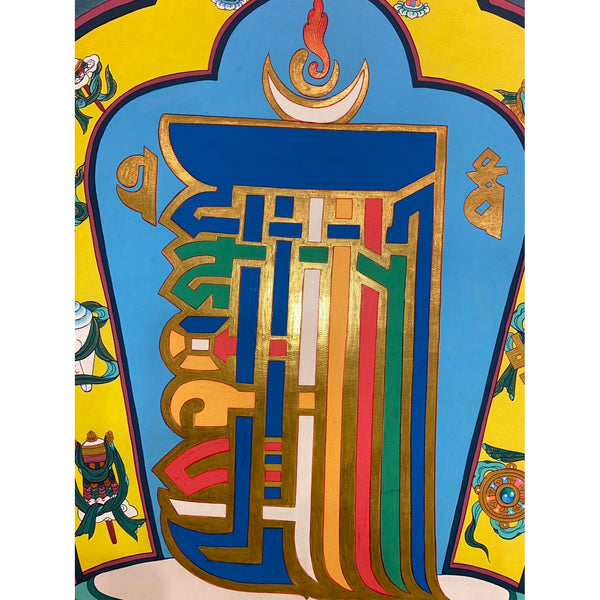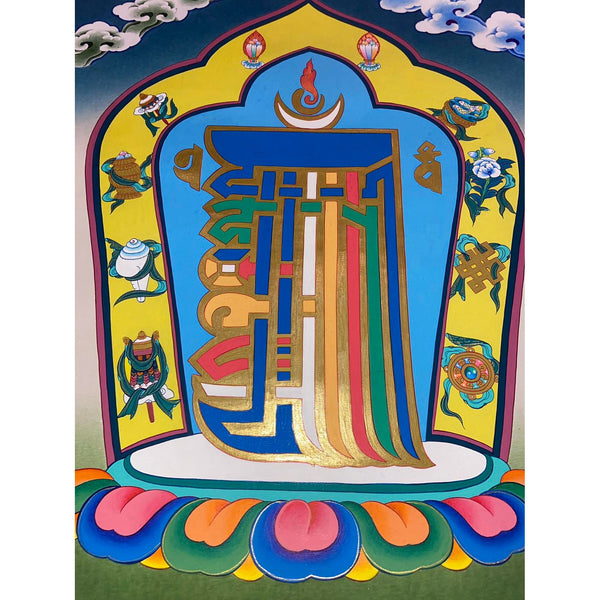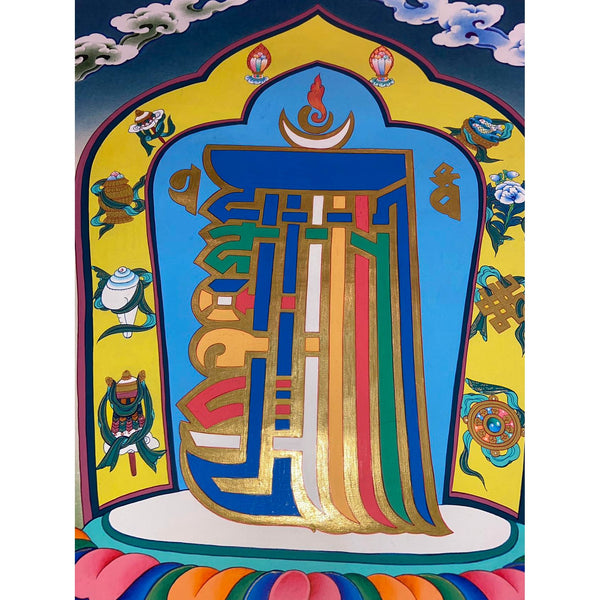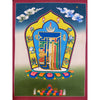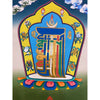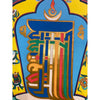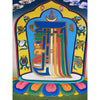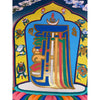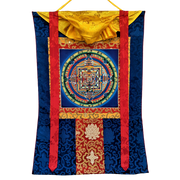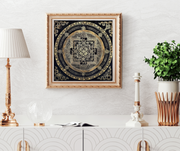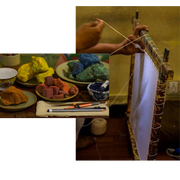Kalachakra Alphabet Tibetan Thangka Painting
SPRING SALE
Get it between - .

Kalachakra Alphabet Thangka – Wisdom, Compassion, and Protection
The Kalachakra Alphabet Thangka is a powerful and sacred piece of Tibetan art, representing the profound teachings of the Kalachakra Tantra. This exquisite thangka is hand-painted using Tibetan gold dust and natural pigments, showcasing the sacred Kalachakra alphabet. The Kalachakra symbolizes time, wisdom, and the eternal cycle of life. The thangka serves as a visual guide for the practitioner, offering spiritual guidance, protection, and a deeper connection to the divine teachings of the Kalachakra.
Specifications
- Dimensions: 50 x 38 cm
- Materials: Tibetan Gold Dust with Tibetan Colors
- Canvas: Organic Cotton
- Hand Painted in Nepal
- Fine Quality Tibetan Thangka
Symbolism and Significance
The Kalachakra alphabet is a sacred script used to write the teachings of the Kalachakra tantra. It is believed to hold power over the elements and the mind, and is frequently used in rituals to invoke blessings and protection. The presence of the Kalachakra alphabet in the thangka adds an additional layer of divine wisdom and power, connecting the practitioner with the energies of the universe.
Key Benefits:
- Increased Wisdom and Compassion: The Kalachakra alphabet is associated with the qualities of wisdom and compassion, two essential elements for spiritual development. Meditating on this thangka cultivates these qualities within oneself.
- Protection from Negative Influences: The Kalachakra alphabet is believed to possess protective powers that shield its owner from negative energies and influences. Displaying this thangka helps create an environment of peace and safety.
- Spiritual Guidance and Inspiration: The Kalachakra Alphabet Thangka offers spiritual guidance, inspiring deeper understanding and connection to the teachings of the Kalachakra tantra.
- Healing and Transformation: The Kalachakra alphabet is thought to have the power to heal both physical and spiritual ailments, while also transforming negative karma, promoting overall well-being.
Meditation Practices with Kalachakra Alphabet Thangkas
Meditating on a Kalachakra Alphabet Thangka is a powerful practice for connecting with its wisdom and compassion. Here's a simple meditation practice to guide you:
- Set an Intention: Before beginning your meditation, set a clear intention to cultivate wisdom, compassion, or deepen your connection with the Kalachakra alphabet.
- Gaze at the Thangka: Sit comfortably, facing the thangka, and focus on the individual letters of the Kalachakra alphabet. Let the presence of these sacred symbols fill your mind.
- Contemplate the Symbolism: Reflect on the colors, shapes, and patterns within the thangka. Consider how each element reflects the power and wisdom of the Kalachakra teachings.
- Recite the Kalachakra Alphabet: Gently recite the Kalachakra alphabet, either aloud or silently, feeling the vibrations of each letter resonate within your body.
- Visualize Yourself Surrounded by the Kalachakra Alphabet: Imagine yourself enveloped by the intricate and powerful calligraphy of the Kalachakra alphabet, absorbing its protective and transformative energies.
- Embody Wisdom and Compassion: In your meditation, embody the qualities of wisdom, compassion, and loving-kindness. Allow these qualities to infuse your mind and actions.
- End with Gratitude: Conclude your practice by expressing gratitude for the blessings and guidance you have received from the Kalachakra alphabet. Feel a sense of peace and clarity as you return to your everyday life.
By incorporating this Kalachakra Alphabet Thangka into your meditation space or home, you can deepen your spiritual practice and connect more fully with the timeless wisdom and compassion that this sacred artwork represents.
You can find answers to common questions on our FAQ page here.
View all our shop reviews at reviews page here.

